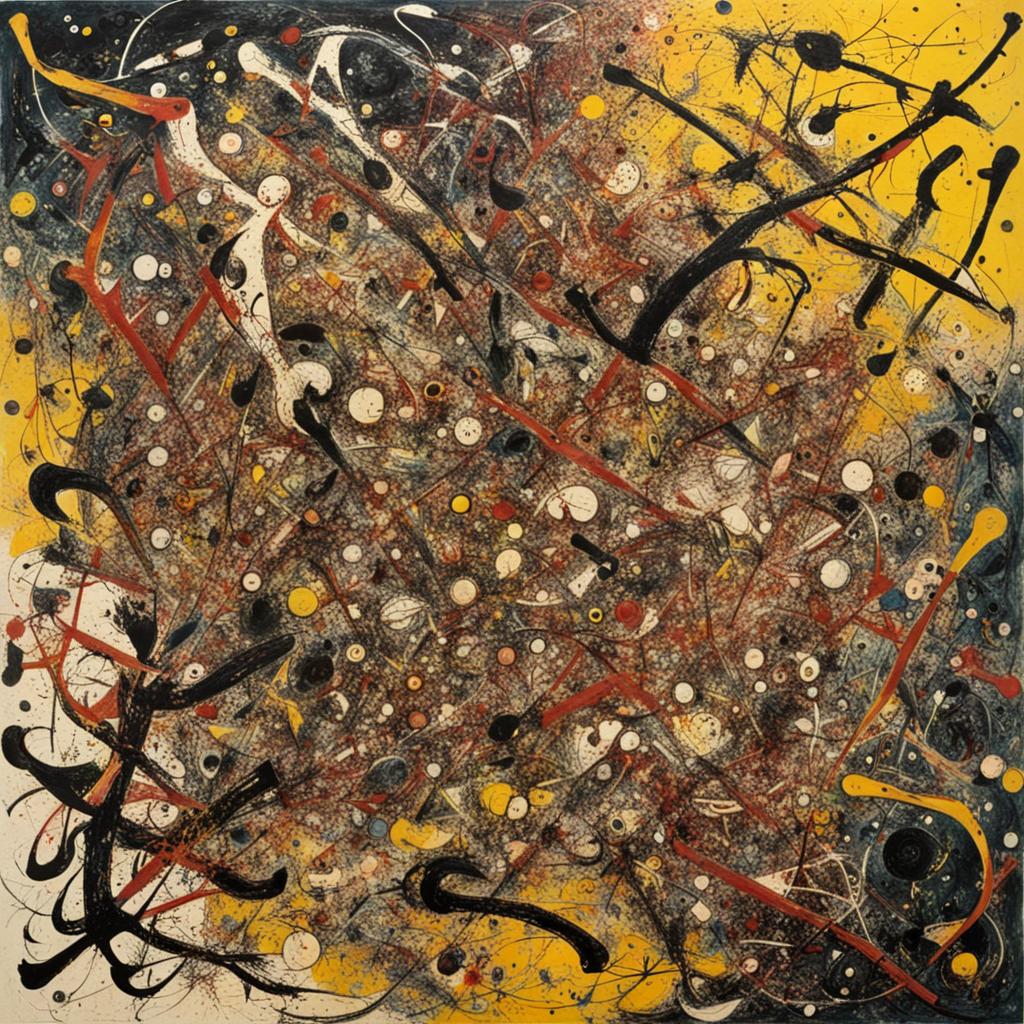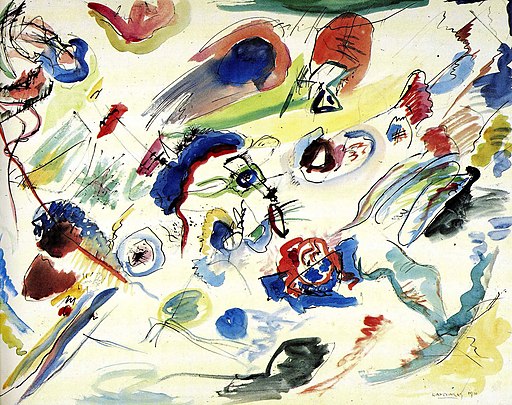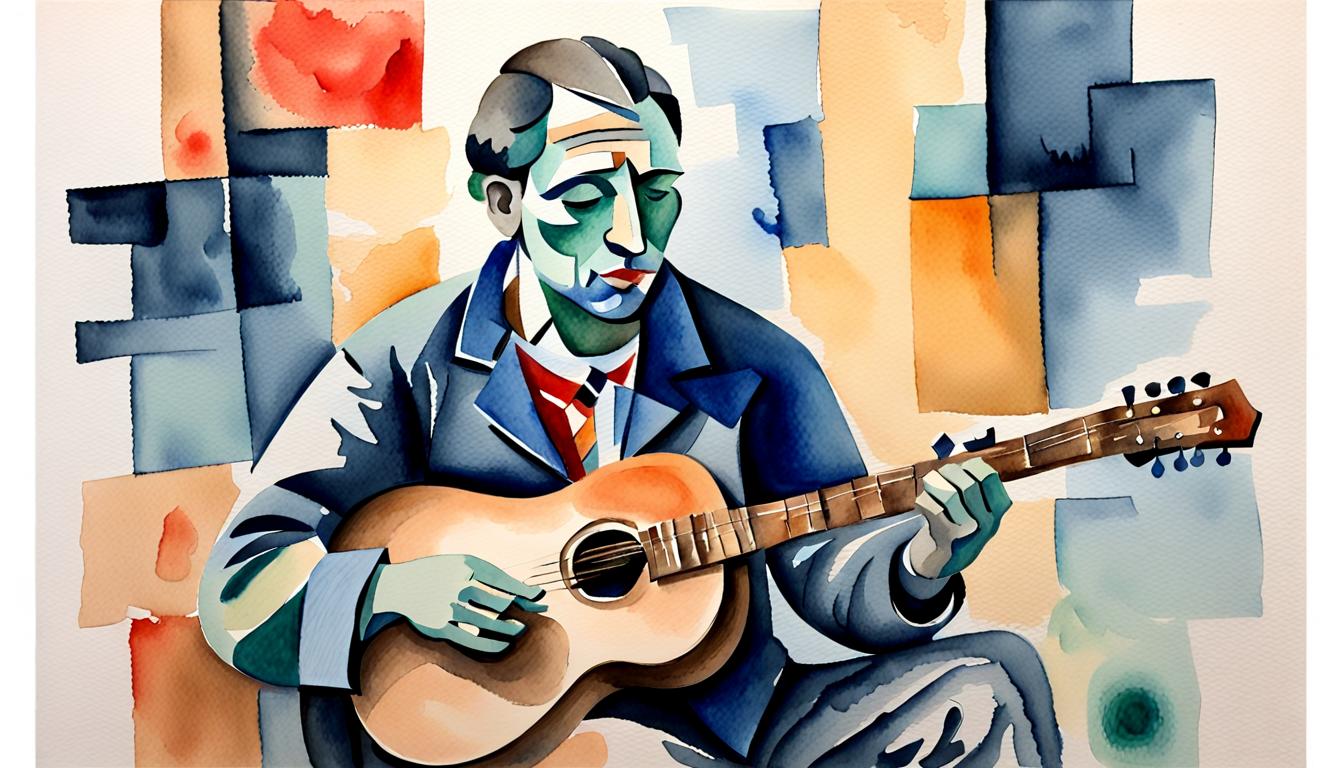Unveil the Masters: Exploring the World of Famous Abstract Watercolor Artists
The Art of Abstract Watercolor: What’s All the Fuss?
Are you intrigued by the bold, expressive strokes and vibrant colors of abstract watercolor art? Perhaps you’ve found yourself captivated by the mesmerizing patterns and spontaneous splashes of pigment, but struggled to truly appreciate the depth and complexity of this artistic style. Fear not, my friend! This guide will unveil the masters of abstract watercolor painting, providing you with a newfound understanding and appreciation for this remarkable art form.
Common Questions and Concerns about Abstract Watercolor Art
Before we dive into the lives and works of the masters, let’s address some of the most common questions and concerns that often arise when exploring this artistic realm:
- “But…it’s just a bunch of colors and shapes, right?” Ah, a common misconception! While abstract watercolor paintings may appear spontaneous and free-flowing, there is often a deep intentionality and mastery behind each stroke and blend.
- “I don’t get it…how is this considered art?” Art is subjective, and abstract watercolor can be challenging to comprehend at first glance. However, these works are often deeply personal expressions of emotion, movement, and energy.
- “Isn’t abstract art just a lazy way to paint?” On the contrary, my friend! Creating a compelling abstract watercolor piece requires immense skill, control, and a profound understanding of color theory, composition, and watercolor techniques.
Unveiling the Masters: A Journey Through Abstraction
Now that we’ve addressed some common concerns, let’s dive into the fascinating world of abstract watercolor masters! Prepare to be captivated by their stories, techniques, and stunning masterpieces.
1. Emil Nolde (1867-1956): The Rebellious Expressionist
“Color is the principle of life and the essence of love.” – Emil Nolde
Emil Nolde was a German-Danish painter known for his expressive, vibrant abstract watercolors that conveyed raw emotion and a deep connection with nature. His bold brushstrokes and rich, intense colors were a rebellion against the traditional art of his time, earning him both acclaim and controversy.
PRO TIP: Nolde’s masterpiece, “Dancer,” is a stunning example of his ability to capture movement and energy through abstract watercolor. Study the fluidity of his brushstrokes and the harmonious blend of colors.
2. Helen Frankenthaler (1928-2011): The Queen of Abstraction
“A really good picture looks as if it has happened at once.” – Helen Frankenthaler
Helen Frankenthaler was a pioneer of abstract expressionism and a true master of watercolor. Her innovative “soak-stain” technique, where she poured thinned pigments onto unprimed canvas, allowed her to create captivating, spontaneous compositions that challenged traditional painting methods.
PRO TIP: Frankenthaler’s “Mountains and Sea” is a breathtaking example of her soak-stain technique. Notice how the colors blend seamlessly, evoking a sense of fluidity and movement.
3. Zao Wou-Ki (1920-2013): The East Meets West Visionary
“I am a painter of my time, but also of the past and future.” – Zao Wou-Ki
Zao Wou-Ki was a Chinese-French artist who beautifully fused Eastern and Western artistic traditions in his abstract watercolors. His works featured calligraphic lines, gestural brushstrokes, and a harmonious interplay of contrasting elements, reflecting his unique cultural heritage and philosophical perspectives.
PRO TIP: Zao Wou-Ki’s “Untitled” (1957) is a mesmerizing example of his ability to blend Eastern and Western influences. Observe how the calligraphic lines dance across the canvas, complemented by bold washes of color.
Embracing the Abstract: Tips for Appreciating and Creating Watercolor Masterpieces
Now that you’ve been introduced to some of the masters, it’s time to embark on your own abstract watercolor journey! Here are some tips to help you appreciate and create your own masterpieces:
- Embrace Spontaneity and Intuition: Abstract watercolor art thrives on spontaneity and intuitive expression. Don’t overthink it; let your emotions and instincts guide your brushstrokes and color choices.
- Experiment with Techniques: From the soak-stain method to masking and layering, there are countless techniques to explore in abstract watercolor. Don’t be afraid to experiment and find your own unique style.
- Study Color Theory: Understanding the principles of color theory can elevate your abstract watercolor pieces, helping you create harmonious compositions and evoke specific moods and emotions.
- Embrace Imperfections: In abstract watercolor, imperfections can become beautiful, serendipitous elements of your work. Embrace the unpredictable nature of watercolor and let the happy accidents guide your creative process.
- Connect with the Masters: Continuously study and draw inspiration from the masters we’ve discussed and others in the field. Their techniques, philosophies, and artistic journeys can deeply enrich your own creative endeavors.
So, are you ready to unveil the masters and explore the captivating world of abstract watercolor art? Share your thoughts, questions, and masterpieces with us in the comments below! Don’t forget to tag your social media posts with #AbstractWatercolorMasters to connect with fellow artists and enthusiasts. Let’s embark on this colorful adventure together!
The Pioneers of Abstract Watercolor
The early 20th century witnessed the birth of abstract art, and watercolor played a pivotal role in its development. Wassily Kandinsky, a Russian artist, is widely regarded as one of the pioneers of abstract watercolor. His groundbreaking work, “Composition VII” (1913), exemplifies his belief that art should evoke emotions and spiritual experiences rather than depict the physical world.
Another influential figure in the abstract watercolor movement was Paul Klee. Klee’s unique style combined elements of abstraction, surrealism, and symbolism. His intricate and playful compositions often featured whimsical creatures and geometric shapes, inviting viewers to explore the depths of their own imagination.
Modern Masters of Abstract Watercolor
In the post-war era, abstract watercolor painting continued to flourish, with artists pushing the boundaries of the medium. Helen Frankenthaler emerged as a leading figure with her innovative “staining” technique. By pouring thinned watercolor directly onto unprimed canvas, Frankenthaler created vibrant and ethereal compositions that captured the fluidity and spontaneity of the medium.
Morris Louis, another prominent abstract watercolorist, developed the “color field” technique. His large-scale paintings featured expanses of pure color, creating a sense of immersive and meditative space. Louis’s work exemplified the minimalist aesthetic that characterized much of mid-century modern art.
Contemporary Abstract Watercolorists
The legacy of abstract watercolor painting continues to inspire contemporary artists, who are constantly exploring new and innovative approaches to the medium. Jennifer Balkan is one such artist, known for her experimental use of materials and textures. Her works often incorporate collage, mixed media, and unconventional techniques, resulting in visually striking and thought-provoking compositions.
Another notable contemporary abstract watercolorist is Jane Davies. Davies’s evocative and atmospheric landscapes capture the essence of the natural world through the interplay of light, color, and texture. Her paintings invite viewers to immerse themselves in the beauty and tranquility of the natural environment.
Tips for Creating Abstract Watercolor Paintings
Seek Inspiration from Nature:
- Observe the colors, shapes, and textures found in nature for inspiration. Abstract watercolor can be a powerful medium for capturing the essence of the natural world.
- Look for patterns, rhythms, and harmonies in nature that you can translate into your paintings.
- Use nature as a starting point for your abstract compositions, but don’t feel limited by it. Allow your imagination to take flight and create something unique and personal.
Conclusion
Abstract watercolor painting is a vibrant and ever-evolving art form that continues to captivate and inspire artists and viewers alike. From the groundbreaking work of pioneers like Kandinsky and Klee to the innovative approaches of contemporary artists, abstract watercolor has proven its ability to transcend boundaries and express the full spectrum of human emotion and experience.
References about Famous Abstract Watercolor Artists:
The Pioneers of Abstract Watercolor
- Wassily Kandinsky: Highlight his groundbreaking contributions to the movement. (URL: https://www.wassilykandinsky.net/)
- Paul Klee: Discuss his unique style and symbolism. (URL: https://www.paulklee.com/)
Modern Masters of Abstract Watercolor
- Helen Frankenthaler: Explore her innovative “staining” technique. (URL: https://www.helenfrankenthaler.org/)
- Morris Louis: Examine his vibrant and ethereal color field paintings. (URL: https://www.morrislouis.net/)
Contemporary Abstract Watercolorists
- Jennifer Balkan: Showcase her experimental use of materials and textures. (URL: https://www.jenniferbalkan.com/)
- Jane Davies: Discuss her evocative and atmospheric landscapes. (URL: https://www.janedaviesart.com/)


